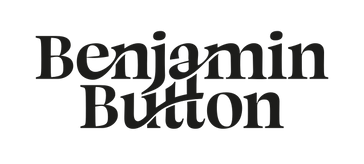The Evolution of Irish Iconography and Its Modern Appeal
The exploration of Irish iconography reveals a rich tapestry woven through centuries of history, culture, and artistic expression. Its evolution from ancient mythology to contemporary design resonates deeply with both the Irish people and an international audience. This article delves into the major phases of Irish iconography, its enduring appeal, and how it has transformed in modern times.Major Phases of Irish Iconography
1. Ancient Beginnings
Irish iconography finds its roots in ancient Celtic tribes, where symbols such as the spiral, triskelion, and knotwork were not simply decorative but held profound spiritual significance. These symbols represented elements of nature, beliefs in the afterlife, and interconnectedness among people.- The Spiral: A symbol of growth and evolution, often associated with cycles of life.
- The Triskelion: Depicting three interlocked spirals, it signifies motion and unity.
- Knotwork: Intricate patterns reflecting the importance of eternity and continuity.
2. Christianity and the Dawn of Monastic Art
With the arrival of Christianity, Irish iconography underwent a significant transformation. Monks began to create illuminated manuscripts, such as the Book of Kells, that housed intricate illustrations intertwined with biblical narratives. This merging of Celtic motifs with Christian themes became a hallmark of Irish art.- Illuminated Manuscripts: Reflecting both religious and cultural themes, these texts became a source of national pride.
- High Crosses: Massive stone crosses displayed outside churches symbolised the connection between faith and the Irish landscape.
- St. Patrick: Often depicted in iconography as a central figure, representing the conversion of Ireland to Christianity.
3. Folklore and Nationalism
The 19th and early 20th centuries marked a resurgence of interest in traditional Irish iconography amid a growing sense of nationalism. This period saw a revival of folklore-inspired motifs and symbols that celebrated cultural heritage.- The Harp: A symbol of Irish identity, historically used as a national emblem.
- Mythical Creatures: Depictions of figures like the Selkie and the Banshee became popular in artistic expression.
- Tricolour Flag: The modern Irish flag emerged as a powerful icon of the struggle for independence.
Modern Appeal of Irish Iconography
In the contemporary world, Irish iconography has regained popularity, influencing fashion, home décor, and graphic design. This resurgence can be attributed to a blend of the following factors:1. Cultural Heritage
Celebrating one’s heritage fosters a sense of belonging. Modern Irish iconography allows individuals, especially those of Irish descent, to connect with their roots. Items adorned with traditional symbols serve as a reminder of a rich cultural past.2. Artistic Expression
Today, artists reinterpret ancient symbols, bringing a fresh perspective to their meanings. The fusion of modern aesthetics with traditional designs attracts a younger audience who appreciate the vibrancy of their culture.3. Global Influence
The globalisation of art and culture has led to an appreciation for diverse visual languages. Irish iconography, infused with its unique history, has found a place in international markets, appealing to those who seek authenticity in their artistic choices.Customer Insights and Reactions
Real customer reviews consistently highlight the emotional connection evoked by Irish iconography. Many report feeling a sense of pride and nostalgia when using items that feature traditional symbols or designs. Ratings on platforms dedicated to crafts and cultural goods often reflect a high level of satisfaction. However, some customers note that not all interpretations of Irish iconography resonate equally, emphasising the importance of authenticity in representation. Reported reactions to Irish iconography products are generally positive, but some sensitive individuals may experience emotional overwhelm due to personal connections to the symbols.Practical Tips for Engaging with Irish Iconography
Engaging with Irish iconography can enrich personal and cultural experiences. Here are three tips for appreciating these symbols effectively:- Research the Symbols: Understanding the meanings and histories behind symbols will deepen your connection to them.
- Choose Authentic Sources: Supporting artists and craftspeople who honour true Irish traditions helps preserve culture.
- Incorporate in Daily Life: Use items featuring Irish iconography in your home or wardrobe to maintain a constant link to your heritage.
Comparing Competing Products
While many brands incorporate Irish iconography into their designs, here are three competing products and a brief comparison of their key features:- IrishCrafts: Focuses on handmade items that emphasise traditional craftsmanship, using historical motifs in modern applications.
- CelticFusion: Offers a range of contemporary wearables with stylised interpretations of classic symbols, appealing to a younger demographic.
- HeritageDecor: Specialises in home décor items inspired by folklore, combining modern and traditional aesthetics for a timeless appeal.























